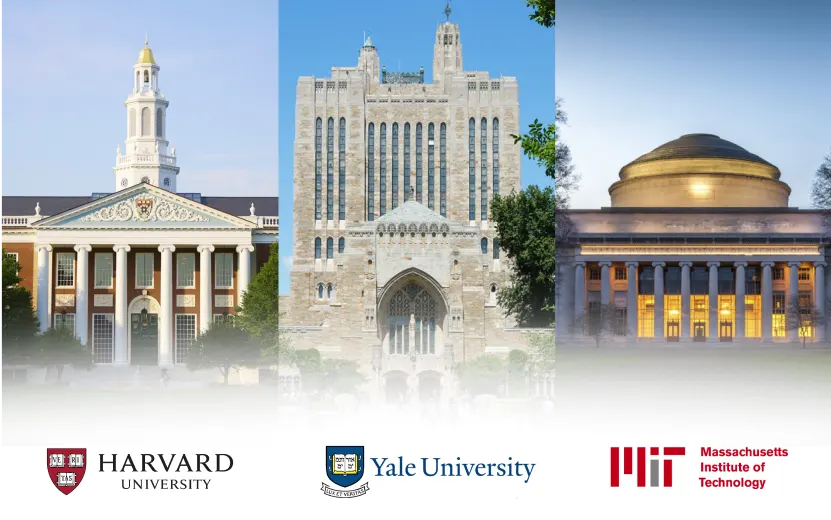12 December 2024
7 minutes read
Can I Get into MIT with a 3.7 GPA? Exploring MIT Admission Chances

Introduction
The Massachusetts Institute of Technology, commonly known as MIT, is renowned for its world-class education and cutting-edge research. Every year, thousands of students aspire to be a part of this prestigious institution, and one of the burning questions on their minds is whether they can get into MIT with a 3.7 GPA.
In this guide, we’ll delve into MIT’s admission criteria, including GPA, SAT scores, and more, to help you understand your chances of becoming an MIT student.
MIT Admission Requirements:
- GPA and SAT Score: While a 3.7 GPA is a strong academic achievement, it’s important to note that MIT is highly competitive. The average GPA of admitted students is typically around 4.17, which translates to a weighted GPA of 4.0 or higher.
Similarly, the average SAT score for MIT applicants is in the range of 1550 to 1580 out of a possible 1600. When considering your GPA, it’s crucial to understand that MIT reviews your transcript in the context of your high school’s grading scale and rigor. This means that an A in a challenging Advanced Placement (AP) course might carry more weight than an A in a standard class. - Extracurricular Activities: MIT values not only academic excellence but also a well-rounded applicant. Your involvement in extracurricular activities, such as clubs, sports, and community service, can greatly enhance your application. This section explores the role of extracurriculars in the admissions process and offers tips on how to make the most of your non-academic pursuits.
- Letters of Recommendation: Strong letters of recommendation from teachers, mentors, or employers can make a positive impact on your application. They provide insights into your character and abilities beyond what your transcripts show. Learn how to secure compelling recommendations and who the best recommenders are for your MIT application.
- Standardized Test Scores: In addition to SAT scores, MIT also considers ACT scores. A competitive score in either of these standardized tests is crucial. This section discusses the importance of standardized tests, how to prepare effectively, and what scores MIT typically looks for.
- Coursework: MIT prefers applicants who have taken a challenging and rigorous course load, particularly in math and science subjects. Advanced Placement (AP), International Baccalaureate (IB), or honors courses can boost your application. Discover how to select the right courses, balance your workload, and excel in your academics.
Chances of Getting into MIT with a 3.7 GPA:
While a 3.7 GPA is below the MIT average, it’s not impossible to gain admission. MIT follows a holistic admissions process, considering various factors beyond just grades. Here are some key points to consider:
- Extracurriculars Matter: Exceptional involvement in extracurricular activities, leadership roles, and impactful projects can help compensate for a lower GPA. This section provides examples of outstanding extracurricular achievements and offers guidance on how to stand out.
- Test Scores: Scoring exceptionally well on the SAT or ACT can strengthen your application and mitigate a lower GPA. Explore test preparation strategies, including resources and study plans, to achieve your best possible score.
- Letters of Recommendation: Stellar recommendations can provide the admissions committee with a more comprehensive view of your capabilities. Discover how to approach potential recommenders and what elements make a recommendation letter truly exceptional.
- Diverse Background: MIT values diversity and seeks students from various backgrounds. If you have unique life experiences or come from an underrepresented group, it can be an asset. Learn how to highlight your diversity in your application.
- Transfer Admissions: If you’re already in college or community college, you may have the opportunity to transfer to MIT after demonstrating strong academic performance in your current institution. This section outlines the transfer admissions process and what you need to do to maximize your chances.
The MIT Admission Process in Detail
The MIT admission process is multifaceted and thorough. To increase your chances of acceptance, it’s essential to understand the nuances of each stage. Let’s dive into the details of the MIT admission process, step by step.
The Common Application and MIT-specific Supplements
The first step in applying to MIT is completing the Common Application, which is a standardized application used by many colleges and universities. In addition to the Common App, MIT requires applicants to submit MIT-specific supplements, which include additional essays and information.
These essays provide insights into your personality, experiences, and aspirations, giving the admissions committee a deeper understanding of who you are as an applicant.
Your essays should be well-crafted, showcasing your writing skills and passion for MIT. While a 3.7 GPA may be a factor, a compelling essay can make a significant difference in your application’s overall strength.
Interviews and Recommendations
Once you’ve submitted your application, MIT may invite you to participate in an interview. Interviews are an opportunity for you to showcase your personality and passion for MIT.
They also allow the institute to assess your fit for their community. While interviews are not guaranteed for all applicants, if you are offered one, it’s essential to prepare thoroughly and make a positive impression.
Your letters of recommendation play a critical role in the admissions process. MIT requires two letters of recommendation from teachers in core academic subjects.
These letters should highlight your academic abilities, character, and potential for success at MIT. It’s essential to choose recommenders who know you well and can speak to your strengths effectively.
Demonstrated Interest and Visiting MIT
While demonstrated interest is not a formal requirement for MIT admission, showing genuine enthusiasm for the institute can help your application stand out.
If you have the opportunity to visit the MIT campus or attend information sessions, it can be beneficial. Additionally, consider reaching out to MIT admissions officers with thoughtful questions that demonstrate your interest in their programs and community.
Financial Aid and Scholarships
MIT is committed to making education accessible to all qualified students, regardless of their financial circumstances. The institute offers need-based financial aid, which means your family’s financial situation will be considered when determining your aid package.
MIT does not offer merit-based scholarships, but they provide substantial financial assistance to eligible students. Make sure to submit the required financial documents and adhere to deadlines to maximize your chances of receiving aid.
Strategies for Enhancing Your MIT Application
Now that we’ve explored the components of the MIT admission process, let’s delve into specific strategies for enhancing your application, particularly if you have a 3.7 GPA.
Excel in Extracurricular Activities
While your GPA is essential, your extracurricular involvement can set you apart from other applicants. Focus on activities that genuinely interest you and where you can make a meaningful impact. Leadership roles, innovative projects, and a long-term commitment to a particular activity can make your application more compelling.
Achieve Outstanding Standardized Test Scores
Since your GPA is slightly below the MIT average, achieving exceptional SAT or ACT scores is crucial. Invest time in thorough test preparation, including taking practice tests, enrolling in prep courses if necessary, and familiarizing yourself with the test format and timing.
Write Exceptional Essays
Your essays offer a unique opportunity to showcase your personality, experiences, and passion for MIT. Craft thoughtful, well-written essays that tell a compelling story about who you are and why MIT is the ideal place for your academic and personal growth.
Secure Strong Letters of Recommendation
Choose recommenders who know you well and can speak to your academic abilities and character. Provide them with ample information about your achievements and goals to help them write compelling and personalized recommendation letters.
Highlight Your Unique Qualities
Consider what makes you unique and how your experiences and perspectives can contribute to MIT’s diverse community. Be sure to emphasize these qualities in your application essays and interviews.
Apply Early Action or Regular Decision
MIT offers both Early Action and Regular Decision application options. Early Action is non-binding and allows you to apply early (usually by November 1) and receive your decision by mid-December.
Regular Decision has a later deadline (usually January 1) with decisions released in March. While Early Action can demonstrate strong interest, it’s crucial to submit your best possible application, regardless of the round you choose.
Be Prepared for the Interview
If you’re offered an interview, take it seriously. Research common interview questions, practice your responses, and come prepared with thoughtful questions for your interviewer. Dress professionally and arrive on time.
Transferring to MIT
If you’re already enrolled in a college or community college and have a 3.7 GPA, you may wonder if transferring to MIT is a possibility. The answer is yes, but it’s a highly competitive process. Let’s explore the steps and considerations for transferring to MIT.
Meeting Transfer Requirements
MIT has specific requirements for transfer applicants, including a strong academic record, typically a 4.0 GPA or higher in college-level coursework. Transfers are usually admitted as juniors, so you should have completed at least one full year of college before applying.
Preparing a Strong Transfer Application
To enhance your chances of transferring to MIT, focus on maintaining a stellar college GPA, securing outstanding letters of recommendation from college professors, and highlighting your accomplishments and activities at your current institution. Your application should demonstrate that you’re a dedicated and high-achieving student.
Transfer Credit Evaluation
If you’re admitted as a transfer student, MIT will evaluate your previous college coursework to determine which credits can be transferred. This evaluation can impact your progress at MIT and the courses you’ll need to complete.
Financial Considerations
Transferring to MIT comes with financial considerations. Make sure to explore the financial aid options available to transfer students and understand the cost of attending MIT as a transfer student.
Conclusion
In conclusion, gaining admission to MIT with a 3.7 GPA is challenging but not impossible. MIT’s holistic admissions process considers various factors, including test scores, extracurricular activities, and personal essays.
By excelling in these areas, showcasing your passion for STEM, and considering transfer opportunities, you can enhance your chances of becoming part of MIT’s prestigious community.
Remember that MIT values individuals who demonstrate dedication, creativity, and a commitment to making a positive impact on the world, so make your application shine in these aspects. Best of luck on your MIT journey!
FAQs – Your MIT Admission Questions Answered
What are the average GPA and SAT scores for admitted MIT students?
The average GPA for admitted MIT students is typically around 4.17 on a weighted scale. Regarding SAT scores, successful applicants often score in the range of 1550 to 1580 out of a possible 1600.
Is it possible to get into MIT with a 3.7 GPA?
While a 3.7 GPA is below the MIT average, it’s not impossible to gain admission. MIT follows a holistic admissions process, considering various factors beyond just grades. Strong extracurricular involvement, exceptional test scores, and compelling essays can all enhance your application.
What role do extracurricular activities play in the MIT admissions process?
Extracurricular activities are significant in the MIT admissions process. They provide insights into your interests, passions, and leadership abilities. Exceptional involvement in extracurriculars can compensate for a lower GPA and make your application more competitive.
Does MIT offer financial aid, and are there merit-based scholarships?
MIT offers need-based financial aid to eligible students. While MIT does not offer merit-based scholarships, they are committed to making education accessible to all qualified students, regardless of their financial circumstances.
What is the difference between Early Action and Regular Decision at MIT?
Early Action is non-binding and allows you to apply early (usually by November 1) and receive your decision by mid-December. Regular Decision has a later deadline (usually January 1) with decisions released in March. While Early Action can demonstrate strong interest, it’s crucial to submit your best possible application, regardless of the round you choose.
What is MIT’s approach to diversity in admissions?
MIT values diversity and seeks students from various backgrounds. They actively encourage applicants from underrepresented groups and those with unique life experiences. Your diverse background and perspectives can be an asset in your application.
Can I apply to MIT as a transfer student with a 3.7 GPA?
Yes, you can apply to MIT as a transfer student with a 3.7 GPA. However, admission as a transfer student is highly competitive, and MIT typically admits transfers as juniors. Meeting MIT’s transfer requirements and preparing a strong application are essential.

You can study at top universities worldwide!
Get expert tips and tricks to get into top universities with a free expert session.
Book Your Free 30-Minute Session Now! Book a call now




























